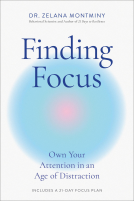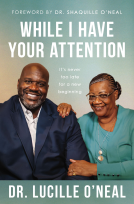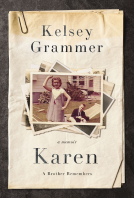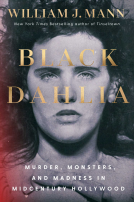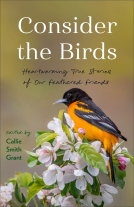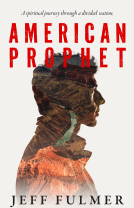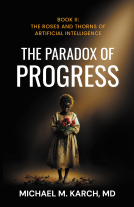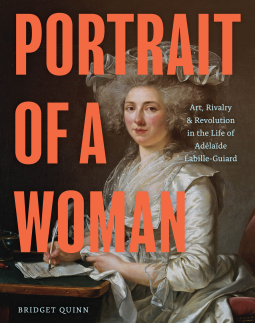
Portrait of a Woman
Art, Rivalry, and Revolution in the Life of Adélaïde Labille-Guiard
by Bridget Quinn
This title was previously available on NetGalley and is now archived.
Send NetGalley books directly to your Kindle or Kindle app
1
To read on a Kindle or Kindle app, please add kindle@netgalley.com as an approved email address to receive files in your Amazon account. Click here for step-by-step instructions.
2
Also find your Kindle email address within your Amazon account, and enter it here.
Pub Date Apr 16 2024 | Archive Date Apr 15 2024
Talking about this book? Use #PortraitofaWoman #NetGalley. More hashtag tips!
Description
Summer in Paris, 1783. The Louvre steps, too hot and no breeze, the air electric with the heady anticipation of a coming storm: the year’s Royal Salon. Bewigged and powdered Parisians mill amid pigeons, dogs, and detritus; food and flower sellers; pamphleteers and propagandists. Men and women of every estate (clergy, nobles, commoners) are united under art: to love it, to despise it, to gossip endlessly about it.
Exhibiting at the Royal Salon was not for the faint of heart, and it was never intended for women.
Enter Adélaïde Labille-Guiard . . .
Born in Paris in 1749, Adélaïde Labille-Guiard rose from shopkeeper’s daughter to an official portraitist of the royal court—only to have her achievements reduced to ash by the French Revolution. While she defied societal barriers to become a member of the exclusive Académie Royale and a mentor for other ambitious women painters, she left behind few writings, and her legacy was long overshadowed by celebrated portraitist and memoirist Élisabeth Vigée-Lebrun.
But Adélaïde Labille-Guiard’s story lives on. In this engaging biography, Bridget Quinn applies her insightful interpretation of art history to Labille-Guiard’s life. She offers a fascinating new perspective on the artist’s feminism, her sexuality, and her vision of the world. Quinn expertly blends close analyses of paintings with broader context about the era and inserts delicately fictionalized interpersonal scenes that fill the gaps in the historical record. This is a compelling and inspiring look at an artist too long overlooked.
INSPIRING HISTORICAL NONFICTION: Despite numerous setbacks, Labille-Guiard built a legacy as an accomplished royal portraitist and a mentor to other young women artists of her era. This tale of solidarity, self-belief, and true passion for painting is sure to inspire contemporary creatives and women today.
CREATIVE AND COMPELLING ART HISTORY BOOK: Bridget Quinn is an award-winning author and art historian who has spent years researching Adélaïde Labille-Guiard’s work and life. She vividly evokes both and weaves a compelling narrative at the intersection of art, gender, and politics.
GORGEOUS ART REPRODUCTIONS THROUGHOUT: This biography features full-color images of artwork by Adélaïde Labille-Guiard, her rumored rival Élisabeth Vigée-Lebrun, and other artists of the era, including portraits of key players in the narrative. These images, interspersed throughout the book, offer valuable visual references to illuminate the engaging text even further.
AN ARTFUL GIFT BOOK: Uniquely crafted and thoroughly researched, this volume makes an outstanding gift for art history enthusiasts and readers who love exploring untold stories in women's history.
Perfect for:
- Readers of memoirs and biographies
- History buffs and fans of historical fiction and nonfiction
- Artists, art lovers, museumgoers, and art history students
- Feminists and readers seeking feminist books
- Francophiles and those interested in the French Revolution
- Fans of Portrait of a Lady on Fire and other historical dramas
Available Editions
| EDITION | Other Format |
| ISBN | 9781797211879 |
| PRICE | $29.95 (USD) |
| PAGES | 224 |
Available on NetGalley
Average rating from 15 members
Featured Reviews
A detailed portrait of the life of Adelaide Labille-Guiard, with quotes from Elisabeth Vigee Le Brun at the start of each chapter. Written in 2nd person, it's quite the interesting biography. The only aspect I disagree with is the two women viewing each other as rivals. I feel that is more the opinion of others, because at the end of the day, they were in many ways in the same boat with regard to their personal and professional lives.
The artwork included was beautiful, showcasing the talent of Labille-Guiard to its best.
Thanks to NetGalley for access to this advanced copy. All thoughts and opinions are my own.
 Reviewer 1206814
Reviewer 1206814
Fabulous writing style. I enjoyed learning about Adelaide Labille-Guiard, and the potential rivalry between artists gives it tension and drives up the stakes. But perhaps I most appreciated where Quinn inserted herself into the writing, or imagined into what Labille-Guiard's life was like. The writing style is conversational, smart, and accessible, Highly recommend. Thanks for the ARC!
 Mike M, Media/Journalist
Mike M, Media/Journalist
I can't say I ever heard of this young lady before reading this book, but if you like art, this one is one for you.
 Reviewer 282001
Reviewer 282001
Review of Portrait of a Woman:
Art, Rivalry, and Revolution in the Life of Adélaïde Labille-Guiard
By Bridget Quinn
Review by Joanne B. Mulcahy
In this compelling biography, Bridget Quinn describes a painting called Delightful Surprise, a 1779 depiction of a woman with bared breasts considered racy for the era. It could have been the book’s title. If you think you’re not interested in the lives and rivalry between two French eighteenth-century women painters, think again. Quinn is a lively writer and astute art historian whose fluid prose and imaginative leaps will keep you turning pages.
Quinn juxtaposes the written memoirs of Élisabeth Vigée-Lebrun, a painter from a privileged family, with the party imagined story of Adélaïde Labille-Guiard, a scrappy but savvy, hungry-to-paint artist whose father was a shopkeeper. Labille-Guiard left no diaries and only one English-language source exists. That absence frees Quinn to bring her to life via imagined scenes. And bring her to life she does, rescuing a remarkable artist from obscurity in juxtaposition with her more elite and well-documented counterpart. The balance of the two women’s lives provides a fitting structure for examining class, gender, and other inequities in social and art history.
Quinn uses the artists’ first names, establishing an intimacy and direct voice that keep us engaged (along with occasional profanity, always le mot juste at the right place).
We enter Élisabeth’s life through her sometimes rapturous memoirs of an upbringing graced with every advantage save that of being male. A gifted artist, she became the toast of Paris as Marie Antoinette’s painter. She married an art dealer-artist, had a daughter, and occasionally taught younger women artists (a task that bored her). Adélaïde traveled from her limited beginnings to study with a rare male painter willing to take on enterprising women. She started with miniatures, then moved into pastels, two of the media open to women. Of her two marriages, one was arranged, the other a happy union of convenience. Both women faced sexism at every turn. One major barrier was the limited number of women admitted to the Royal Academy, a source of prestige, exhibits, and income. Both artists rose to prominence and made their way into this rarified circle.
Enter a prominent Paris art patron who in 1777, exhibited both women’s self-portraits side by side. Thus began the rivalry that forms the book’s heart, although neither woman displayed personal animosity toward the other. When Élisabeth’s painting garnered more attention, she initially seemed the victor. But the tables turned as Adélaïde broke new ground with large-scale paintings and novel subjects. She never had children but she nurtured young female artists to become, in Quinn’s words, a “mother in art.” One of her protegees, Marie Gabrielle Capet, moved in with her until Adélaïde’s death in 1803.
With the 1789 revolution, the schism widened. There is drama and yes, heads do roll. Élisabeth fled for Italy, while Adélaïde, aligned with the basic goals of “egalite,” stayed behind to advocate for women artists. Quinn follows their later lives, which offer more surprises, building to a moving finale. The epilogue recounts the status of both women and consideration of their work today. Quinn’s lively account is a plea to recognize the less documented and still undervalued Adélaïde, and with her, a pantheon of neglected or forgotten artists.
This book will appeal to any reader interested in art history, women’s lives, and compelling storytelling. Quinn also provides an innovative model for writing biography. The genre is changing with the dominance of the Internet and disappearance of letters and other sources. Quinn offers a path in the direction of greater imagination and passionate voice.
 Reviewer 1349379
Reviewer 1349379
This isn’t so much a biography as a work of narrative non-fiction, and sometimes it’s not even non-fiction - Quinn freely imagines scenes, feelings, conversations; and while she assures us they’re fully grounded in plausibility, the same could be said of well-researched historical fiction. She invents entire characters, describes meetings that may never have taken place, and tells us what Adelaide was thinking, feeling, doing, wanting. It’s an interesting book, as much about the author - and her feelings towards her subject - as it is about the subject herself. As Quinn tells us, Adelaide didn’t leave any papers. She really only left her art. The real Adelaide - what she thought, how she thought, how she learned, why she painted the way she did - is invisible; the Adelaide of this book is the author’s construction.
It’s notable that Quinn includes excerpts from the memoirs of Elisabeth Vigee-Lebrun; although she makes the point that the two women were not necessarily the rivals that history has portrayed, I couldn’t help a sneaking suspicion that the real reason she included Vigee-Lebrun’s excerpts because they are lively and alive. We know Vigee-Lebrun (or the Vigee-Lebrun whom Vigee-Lebrun wished us to know) because of her memoirs, which are personable and fascinating. We know how, for example, Vigee-Lebrun felt about her father’s death, because Vigee-Lebrun has told us; about Adelaide’s mother’s death the author can really only say that it happened. That said, I also found interesting the author’s insistence that Adelaide felt no rivalry with Vigee-Lebrun, that she thought of them as on different paths: we don’t have any of Adelaide’s own words attesting to that, and we have Vigee-Lebrun’s words claiming that Adelaide tried to slander her to the king’s aunts. The author has prioritized her imagined Adelaide over historical Elisabeth.
I really enjoyed this, actually, despite the prior several paragraphs of complaining; Quinn is a talented writer and she has written a really interesting, feminist book about the history of eighteenth century art (and I’ll probably be re-reading it with that in mind). It’s just not a nonfiction biography of Adélaïde Labille-Guiard.
 Bookseller 1328597
Bookseller 1328597
4.5 stars rounded to 5.
Mostly narrative nonfiction with a good bit of art analysis and a splash of memoir, I enjoyed this book from start to finish. It felt like, and I mean this in the best way, a chaotic friend telling me their new interest that they haven’t slept in days over.
If you have even a passing interest in art or feminist history, this book is for you. The author explains art styles of the time wonderfully in a way that you don’t need an art history course under your belt to understand.
 Liz S, Reviewer
Liz S, Reviewer
Thank you NetGalley for this early copy of Portrait of a Woman. I am such a fan of Adelaide Labille-Guiard and glad she, and other female artists are getting the spotlight.
This builds on the book Broad Strokes, written earlier by Quinn. As Adelaide did not leave much of a written accounting of her life, much here is based on research and situations that were occurring during her lifetime. I would say this is a historical fiction book, with Quinn imagining reactions and thoughts of her main character. This is interspersed with actual writings from Elisabeth Vigee- LeBrun introducting new chapters. I thought that was a very interesting way to start them.
Both women were very different, and a supposed rivalry between the two. Some of those flames were spread by a critic who opening his own show used their supposed rivarly to attract the crowds to his show. Was it a true one? What is known is the two women were admitted into the Royal Academy of Painting and Sculpture at the same time, they were in a minority of being two of the four women in a sea of 500 plus men allowed into said academy. Their alignment with the French Revolution was different as was their views to elevating other female artists. That said, there is no real documentation that they, anymore than any man, were competing for anything other than patronage and commissions.
I thought the book was written in a very engaging way, bringing alive Adelaide's life. I love that Quinn is bringing her light to a very talented artist to the public. Whether you are an art lover, or just like a good story, this is a very well written and interesting read.
Readers who liked this book also liked:
Scott Michael LeRette
Biographies & Memoirs, Christian, Parenting, Families, Relationships
Jeff Fulmer
General Fiction (Adult), Politics & Current Affairs, Religion & Spirituality
Michael M. Karch, MD
Computers & Technology, Nonfiction (Adult), Professional & Technical

